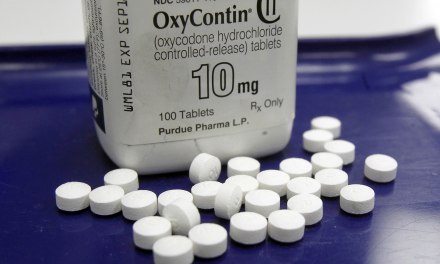This was surprising, at least to me: a large study of prescribing practices among US physicians concluded that common stimulants such as Adderall (an amphetamine) and Ritalin are increasingly being prescribed along with various central nervous system depressants – a sedative, for instance, a sleeper, an antidepressant — even an opioid.
I was under the impression that wasn’t the best idea.
This study appeared in the journal BMJ Open in late April. Here’s a link:
I wasn’t kidding about it being a large study — some 275,000 subjects were involved. The findings: almost half the time, a stimulant was prescribed along with at least one CNS depressant drug. In a quarter of cases, two or more depressants were involved.
And just under one-fifth of the time? An opioid.
This in spite of the fact – a well-known fact, I thought – that these drugs can and often do interact harmfully with one another. And that regular users of stimulant- sedative combinations are at elevated risk for misuse, abuse, dependence, and/or addiction.
The FDA is apparently concerned, to the point where they’ve begun to issue warnings in the form of medication labels. It’s not something they do lightly. I’m not sure how effective such warnings can be if a physician has already written a prescription for the drugs.
Most patients will trust their doctor’s judgment over anything else.
I understand why people who take drugs for recreational reasons would want to combine a stimulant with a depressant. It’s a way to enhance the effects of each (and also prevent the user from falling asleep and thus ‘wasting a perfectly good high’.) It can serve to minimize the less pleasant side effects such as anxiety and nervous irritability (from the stimulant), and oversedation (from the depressant.)
What puzzles me is why a physician would want to participate in such practices. What’s in it for them?
I suppose we could view it as an error. The kind that can occur when a busy doctor is required to treat a long line of patients in a series of brief face-to-face encounters. Say, eleven minutes a visit, which is actually a common standard in many clinics. If the patient happens to have multiple complaints – for instance, pain, depressed mood, and sleeplessness – and no documented history of drug misuse, then the temptation might be to prescribe something for each complaint. That means the patient leaves satisfied, the physician gets a good evaluation on the post-visit satisfaction survey, and that may result in a return appointment. That last is important for the clinic’s bottom line.
Then I remembered that many of these prescriptions could have been written during a telemedicine visit. The patient wasn’t physically present in the office at the time.
Most of those scripts would be off-label, meaning not authorized by the FDA for the intended use. It’s not a huge obstacle, given that probably half the nation’s prescriptions of certain medications fall into that category. It does suggest increased risk.
There’s a secondary issue: how prevalent Adderall and Ritalin use have become among students at US colleges. Turns out that many are using stimulants originally prescribed for someone else — another student, perhaps – only to be sold or traded. It’s certainly something a prescribing physician would want to be aware of, and probably isn’t.
Here’s a report on that problem, and efforts to address it.













